Personnel on Board Offshore Safety
Personnel on Board: Drill rig safety
There are a variety of safety measures that can be put in place in order to make workplaces like those in the oil and gas industry safer.
A control-based approach to safety is one that focuses on putting controls in place to minimize the risks of accidents and injuries. This approach often involves improving training for workers, more stringent safety regulations, and the use of safer equipment and materials.
There is another approach how to mitigating risks and errors in a highly hazardous environment. Let's call it the learn-based approach. Instead of eliminating failures, the learn-based approach is going to focus a lot more at least on expanding successes and finding out how.
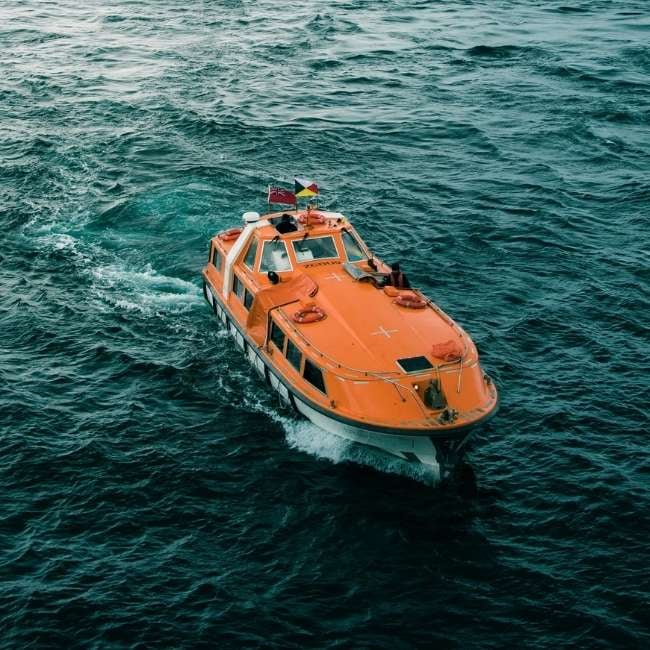
Personnel on board: FPSO labour market
As the demand for FPSO units and crew increases, the experienced workforce gets harder to find. Competing labour markets (e.g. offshore wind energy), the image of being a "dirty" industry and open questions about a life-long career in this sector pull people away from offshore Oil & Gas. Continuous training, better payment and higher working standards will help stop the bleeding. Safe working conditions on board (offshore HSE) play an additional role in the job decision process (learn more about emergency mustering processes). The best crew will go there where payment, working and oil rig safety conditions are the best to support their families onshore and after their career.
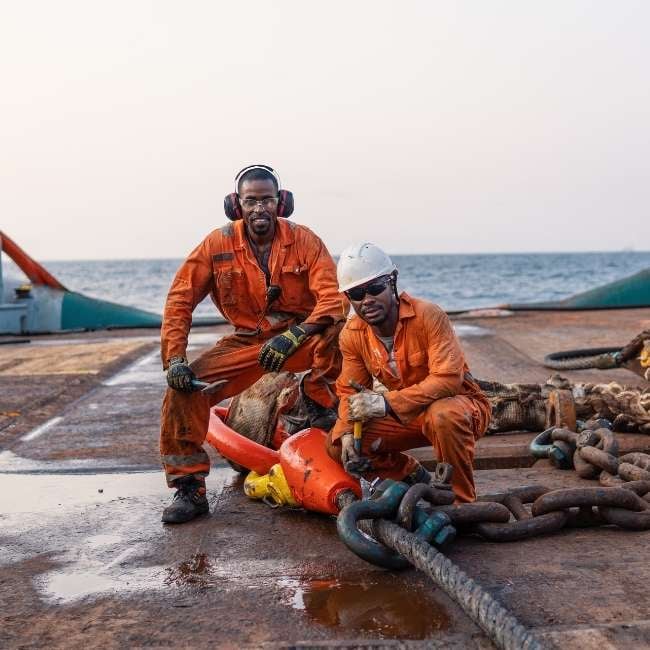
Personnel on board: The Great Crew Change
In Oil & gas, most engineers and geoscientists are either over 55 or under 35. That said, most of the older employees will be retiring in the next 5 -10 years. With them goes invaluable know-how: real world experience can't be learned in school or watching a YouTube video.
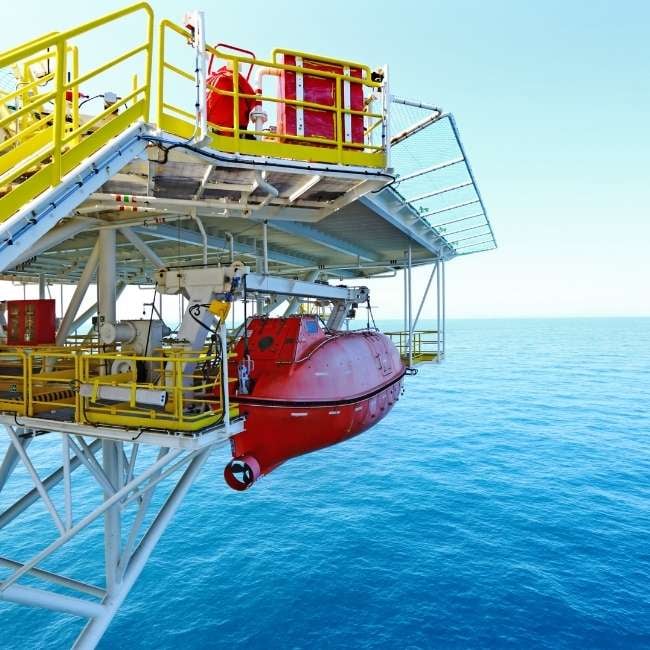
Personnel on board: Oil Rig Hazards
Drilling projects make big money and take an enormous workforce. The Offshore Installation Manager (OIM) ensures operations are handled efficiently and also help keep the crew safe. Besides coordinating with three to four crews and managing day-to-day drilling activities, he must adhere to oil rig safety practices and follow environmental and other government laws and policies. Not an easy job to oversee a large part of the operations for safety. Most of it is the day-to-day safety of the crew and making sure they have what they need to follow policies.
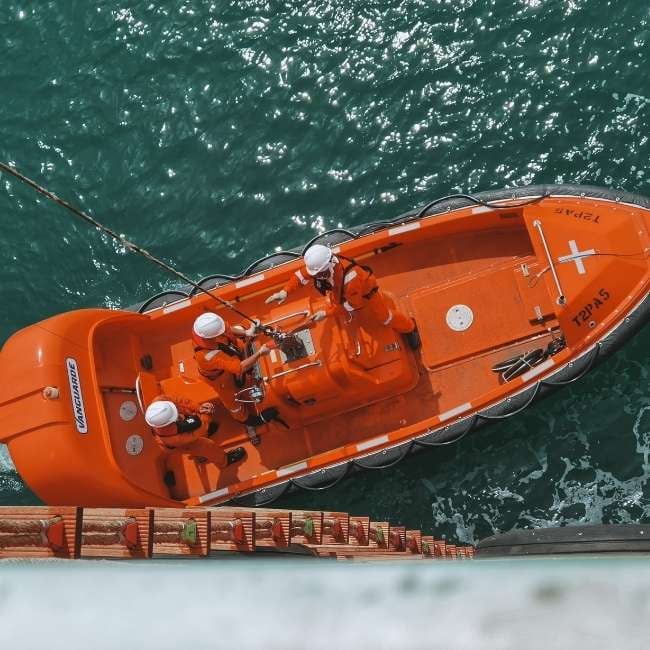
Personnel on board: FPSO Operations
Operational safety is paramount for offshore oil and gas production installations, including FPSOs. FPSOs are large offshore production vessels that are designed to produce oil and gas from deepwater fields, store hydrocarbons, and then offload them to tankers or pipelines for transport. They can also process and refine crude oil into various products.
FPSOs are typically moored to the seabed using either anchoring or dynamic positioning systems and have a large deck area for processing facilities and storage tanks. As a result, FPSOs are often used in fields with no onshore infrastructure, or it would be cost-prohibitive to build them.

Personnel on board: Wind Farm Dangers
In this post, you will find information and an overview of what risks are present in different stages of windfarm operations – from construction to maintenance and decommissioning. It will give you more insights into which areas to focus on while considering the safety aspect.
If it helps to prevent even the smallest incident, it is worth reading it and implementing it in your daily operations in the offshore wind farm. Interested? Then, let’s go.

Personnel on Board: the POB list
In the offshore industry, where work happens in isolated areas far from the mainland, keeping people safe and secure is absolutely crucial. To help with this, there's an essential tool called the Personnel-On-Board (POB) list. It's a detailed record of every person in an offshore facility at any given time. In this article, we'll explore why the POB list is so important for the offshore industry and how it helps ensure smooth operations, prepare for emergencies, and keep track of personnel.

Personnel on Board and Walk2Work
Venturing into the vast expanse of the open ocean to get to an offshore job can be quite an adventure, especially for newcomers to the world of offshore work. Now, don't let the term 'Walk2Work' (W2W) fool you. It's not about casually walking to a neighbouring office on a paved path. It's about the strategies and tools that offshore companies have crafted to ensure their teams can journey safely from land to offshore posts and back with ease. But.. how? and why?
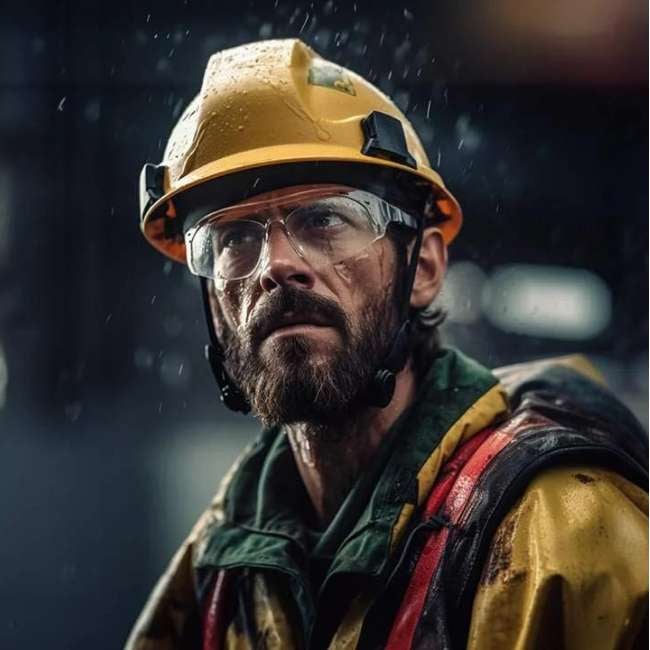
Why Emergency Preparedness is Important
Service Operations Vessels (SOVs) are essential parts of puzzles named maintaining offshore wind turbines and oil platforms. Without them, optimal function cannot be guaranteed. Due to the unstable nature of ocean conditions, operating these vessels demands a combination of skilled expertise, historical knowledge, and advanced technology. The most important? The safety. Of all the crew, equipment, and operations. In just a bit, we'll chat about why emergency preparedness is important for SOVs, leaning on top-notch safety tips.
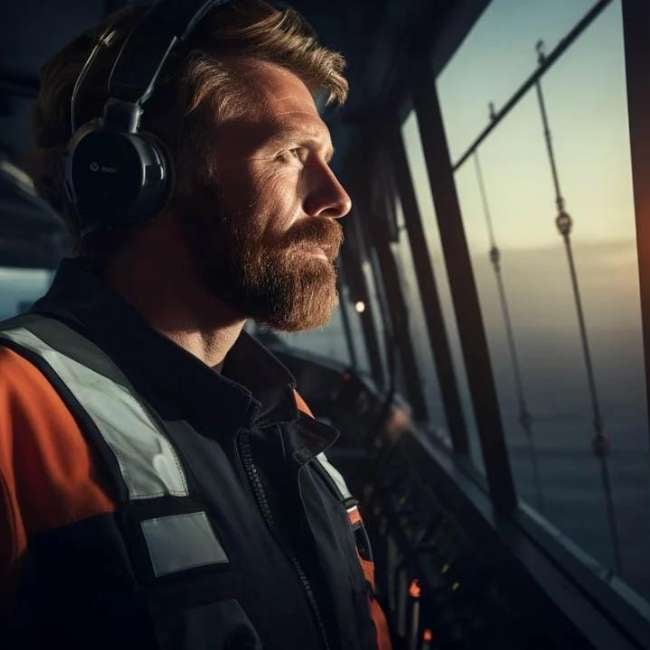
Wind farm boats
Wind power can be harnessed more efficiently and consistently on these installations than it can on land. Wind farms can pose some logistical challenges because they're huge and often remote. A key solution to these challenges is Crew Transfer Vessels (CTVs), specialized boats that bridge the gap between shore and offshore. Offshore wind farms can't function without different vessels and CTVs play a key role in maintaining and operating them.
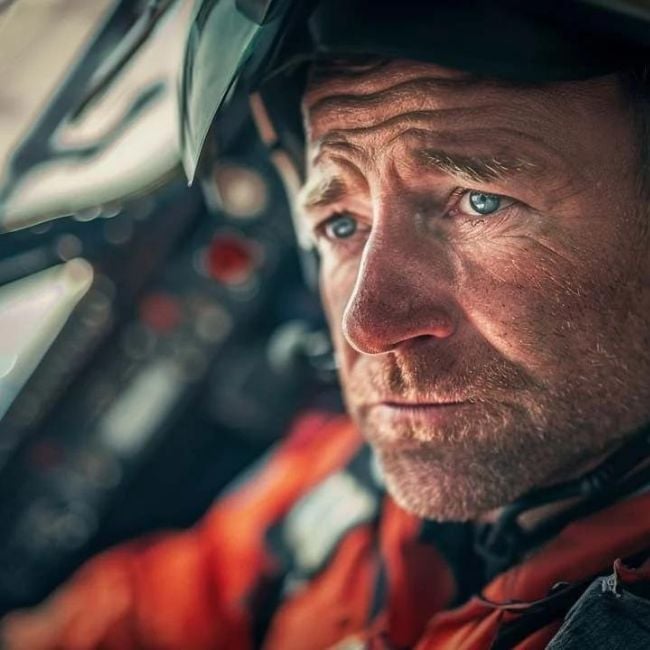
Personnel on Board and Emergency Response time
When you're alone out there on the water, figuring out how to deal with urgent problems is different because it's so remote, the weather can change in a matter of minutes, and it's hard to get help. Emergency Response time is even more crucial. Ships called Service Operations Vessels (SOVs) are extremely important because they do a lot more than help out -- they're the lifeline for people working out on the edge at sea. We'll take a look at how quickly SOVs can respond to emergencies, diving into what it takes to make fast and solid rescue plans in the middle of the ocean, where timing is critical and there's almost no room for mistakes.
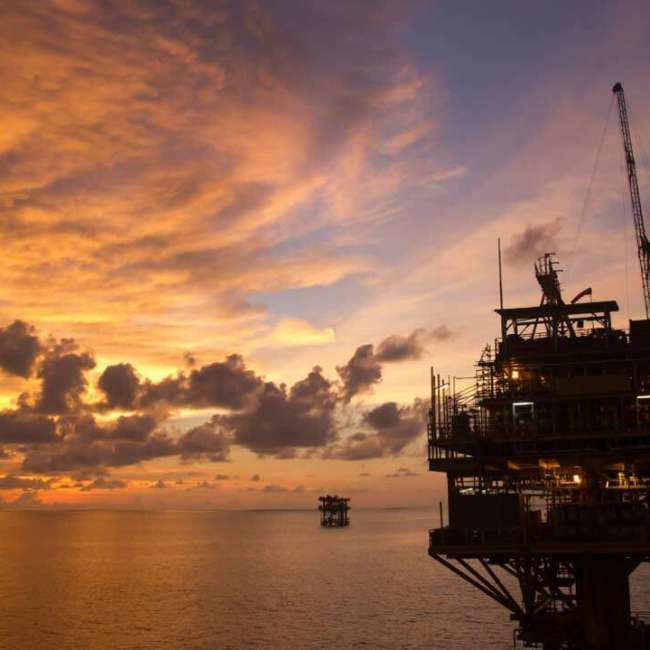
The North Sea Oil History
The discovery and use of North Sea oil and gas have significantly impacted nearby countries' economies, politics, and environments. This large offshore oil field is a major 20th-century energy development located mainly in the U.K. and Norwegian waters. The journey from early exploration to today's sustainability and decommissioning challenges highlights a history filled with technological advances, geopolitical strategies, and economic changes.
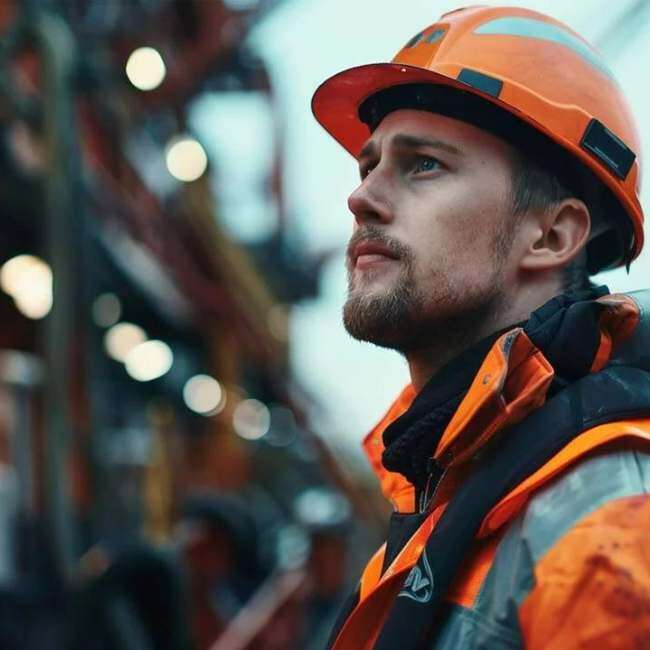
Personnel on board: Windfarm Support Vessels
Offshore wind farms have become part of the mainstay of renewable landscapes that contribute immensely to the production of sustainable power. They utilize the wind to generate electricity in huge amounts by being situated in water bodies away from landmass coastlines. Windfarm support vessels are an integral part of building, operating, and maintaining offshore wind farms against the challenges at sea. This article categorizes, explains the functionality, and importance of such vessels in efficiency and reliability during the production of energy through the winds offshore.

North Sea Oil Fields
For the past six decades, the North Sea has retained a special place in the European maritime scenery and played a pivotal role in the oil and gas industry. It hosts huge hydrocarbon deposits, which make it one of the key regions in the world for offshore oil production. The article provides insight into fields situated in the North Sea, along with its substantive network of pipelines that can extract, transport, and distribute the oil from those fields.
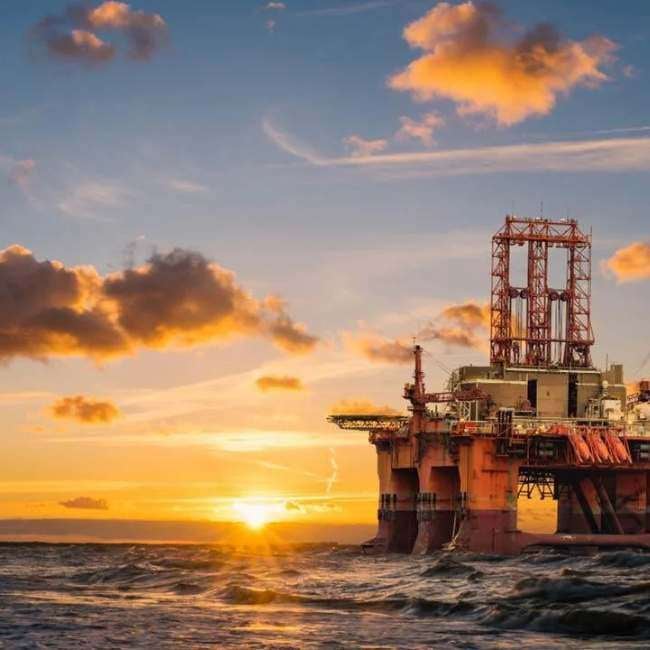
Platform Personnel on Board
The North Sea divides the waters between the United Kingdom and Norway to the north, Denmark, the Netherlands, Germany and Belgium to the east. Since the late 1960s, when the first major oil reserves beneath the seabed were discovered, the North Sea has been used as one of the most strategic areas in terms of oil drilling, to meet the energy demands of nations located in its vicinity, mainly the UK and Norway.
The oil industry has had to work under the complex interplay of diminishing reserves, economic fluctuations, and political and environmental pressures over the last decade. Oil companies constantly adapting to these changing dynamics as new technologies allow the extension of mature fields and new opportunities are pursued. At the same time, the North Sea oil platform owners are under increasing pressure to align their activities with the global transition towards cleaner sources of energy.
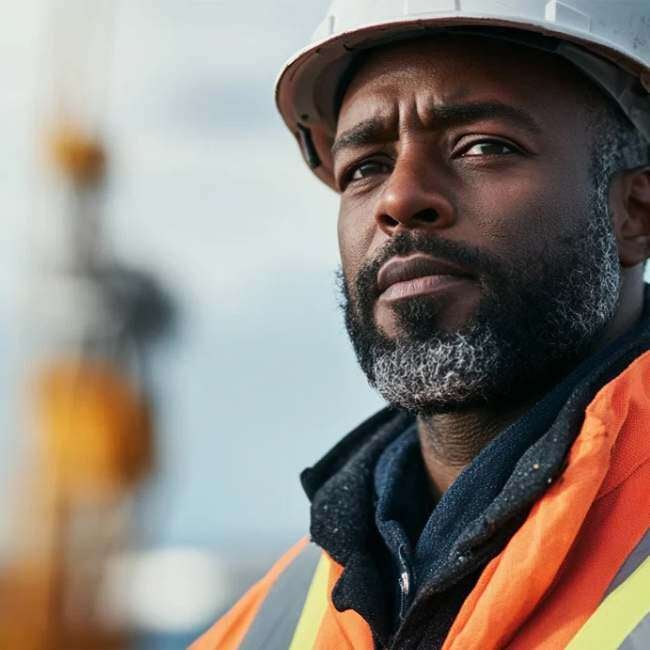
Wind Farm Construction
Offshore wind farm construction is an intricate operation involving many different stakeholders, technologies, and environmental concerns. Consequently, offshore wind energy has become an increasingly important part of global renewable energy strategies due to the availability of stronger and more regular winds at sea. Construction of such enormous facilities requires special engineering, logistical coordination, and careful planning, and there are a myriad of uncertainties and hazards.
This article mainly focuses on explaining the process phases of offshore wind farm construction, identifying important participants in the process, challenges faced during each stage, and uncertainties that may influence the successful completion of the project.
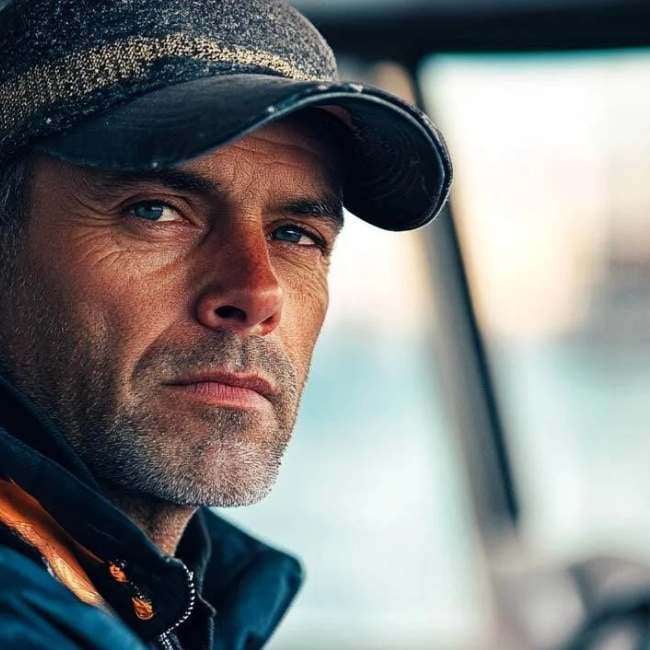
Fast Crew Boat
With the nature of the occupation, such as requiring precision, safety, and efficiency, offshore operations cannot be done without the involvement of fast crew boats. The fast crew boats are vessels designed for quick transportation of personnel, equipment, and provisions that play a very important role in almost all sectors of the general maritime industry, ranging from wind farms and oil platforms down to emergency operations. The article continues to explain in great detail what a fast crew boat is, describes the nature of their principal activities, how that might be integrated with the SOV for offshore wind, how they may play a role in pesonnel on board safety, and provides some insight into the crew operating those vessels.
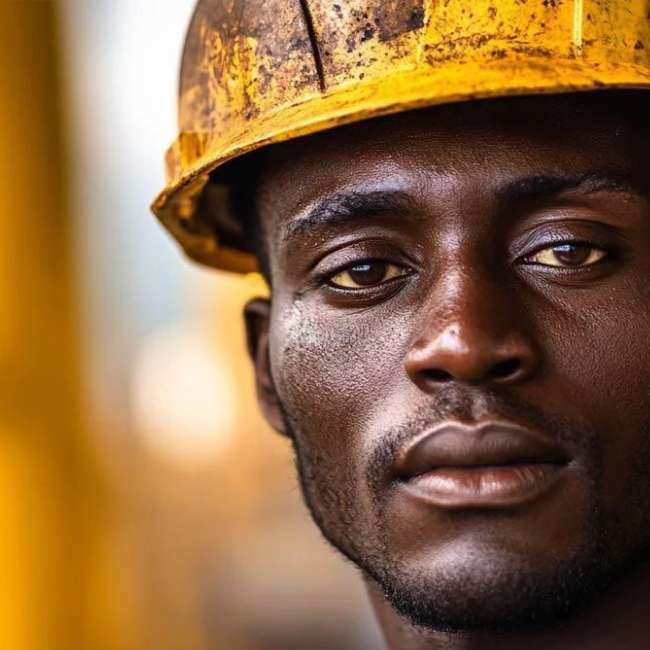
FPSO Industry
The Floating Production, Storage, and Offloading (FPSO) industry is one crucial participant in the offshore oil and gas business. The FPSOs are mainly used to enable the extraction, processing, storage, and transportation of hydrocarbons from offshore fields, largely where traditional platforms are unsuitable. As time went on, the industry grew by the day and developed into a highly specialized area of innovation, adaptation, and resilience. The industry is increasingly important as global demand for energy increases, resources in conventional reserves are depleted, and exploration extends into deeper and more remote waters.
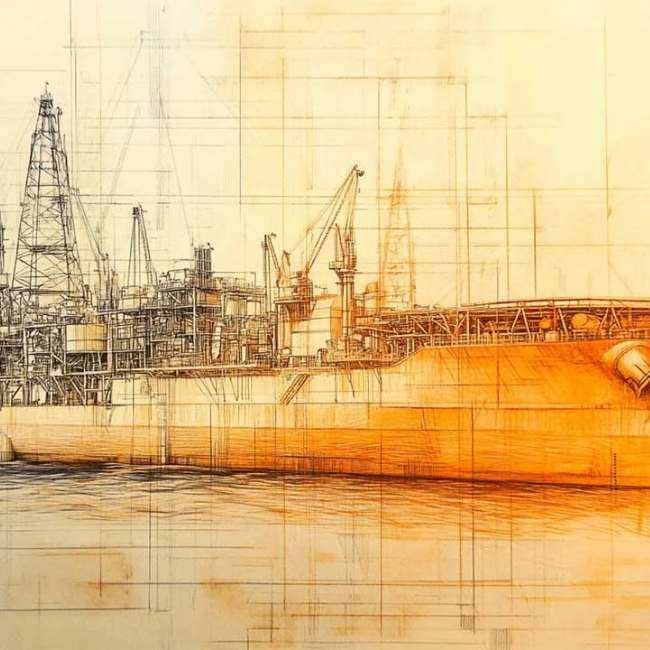
Personnel on board: FPSO Layout
A Floating Production Storage and Offloading (FPSO) installation is an important cornerstone for modern offshore oil and gas production. These complex vessels perform as multifunctional platforms whereby hydrocarbon extraction, processing, and storage are affected before the eventual transfer of the product to shuttle tankers or pipelines. FPSOs operate in deep-water and ultra-deep-water conditions where fixed platforms are not viable. Currently, over 270 vessels are in use worldwide as oil FPSOs. This article discusses the production processes and the detailed FPSO layout, showing how these floating giants operate efficiently in the challenging offshore environment.
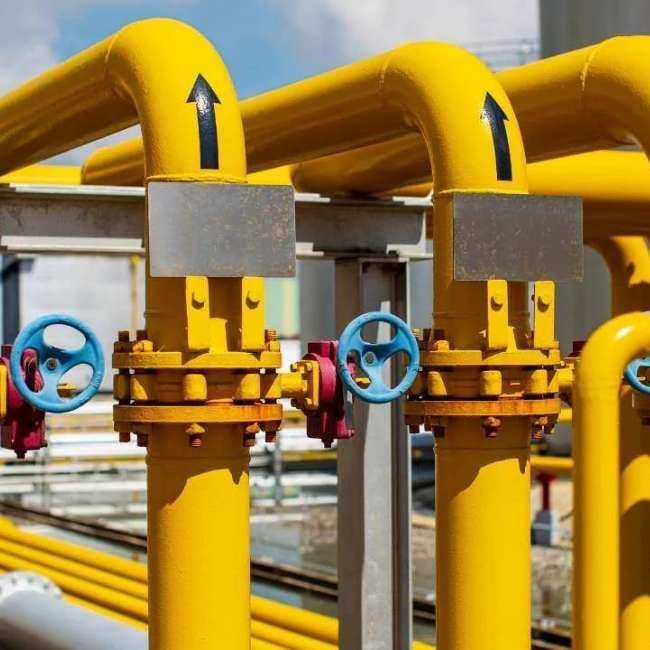
Personnel on board: FLNG vessels
Floating Liquefied Natural Gas vessels are a pioneering phenomenon in the field of energy that combines technology with seafaring expertise to allow for natural gas production, liquefaction, storage, and discharge on board. They target unlocking offshore natural gas reserves that are economically or technologically difficult to exploit through traditional onshore LNG facilities. With worldwide natural gas consumption escalating, the energy demand provision takes FLNG vessels to the heart through their capabilities for flexibility, effectiveness, and reduced carbon output. In the past two years, global natural gas demand and supply patterns have seen a sea change with all countries growing more energy security conscious. FLNG vessels are being slowly adopted by oil and gas operators to produce offshore natural gas fields, and the next few years are poised to be a turning point in the development of this industry.

Personnel on board: FPSO Jobs
FPSO vessels stand as impressive feats of engineering, functioning as vital centres in the offshore oil and gas sector. These floating platforms extract, process, store, and transfer hydrocarbons amid tough ocean conditions. Running an FPSO demands a wide range of workers, each with unique skills, training, and duties. This article examines the different FPSO jobs, focusing on the abilities and education needed for roles like Production Control Room Operator, Production Superintendent, Production Operator, Laboratory Technician, and Maintenance Supervisor. Using insights from industry norms and job outlines, we’ll highlight what these positions entail and how they support the vessel’s goals.
Personnel on board: Oil Rig
Offshore oil and gas production can be a very profitable venture. However, it is vital to avoid costs resulting from incidents. State-of-the-art measures can be taken to prevent incidents, including technology, safety training, and personal protective equipment.
A strong safety culture is vital to preventing accidents and injuries in the workplace. It starts with upper management setting the tone and leading by example. Employees need to feel like they can speak up about safety concerns without fear of retribution. They also need to know that management is committed to protecting their health and safety.

Personnel on board: Transponders
Transponders are expected to play a role in improving safety and efficiency offshore. The industry is forecast to grow significantly in the next decade as new regulations and standards are put in place. Transponders can offer several advantages to the offshore industry, particularly in health, safety and environment (HSE).
Automated mustering using transponders is a new and efficient way to manage safety in offshore environments. This technology tells you quickly and easily about the whereabouts of workers in an area. In the event of an incident, your display will ensure that everyone is accounted for and safe. Additionally, this information can be used to make informed decisions about how to respond.
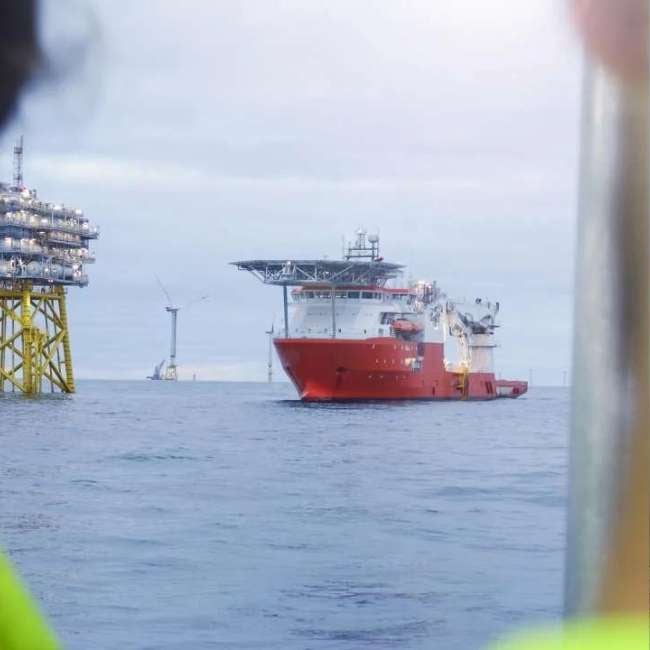
Personnel on board and Offshore Transfers
Workers in the offshore industry face challenging and difficult conditions daily. Traditional methods of transferring crew between installations and vessels, such as helicopter transfers or basket transfers, have been the norm. However, with those methods, huge risks and excessive costs come along, that cannot be ignored.
The emergence of the Walk-to-Work (W2W) approach promises a new era: By utilizing specialized vessels equipped with motion-compensated gangways, this approach has revolutionized offshore crew transfers, enhancing both safety and efficiency.
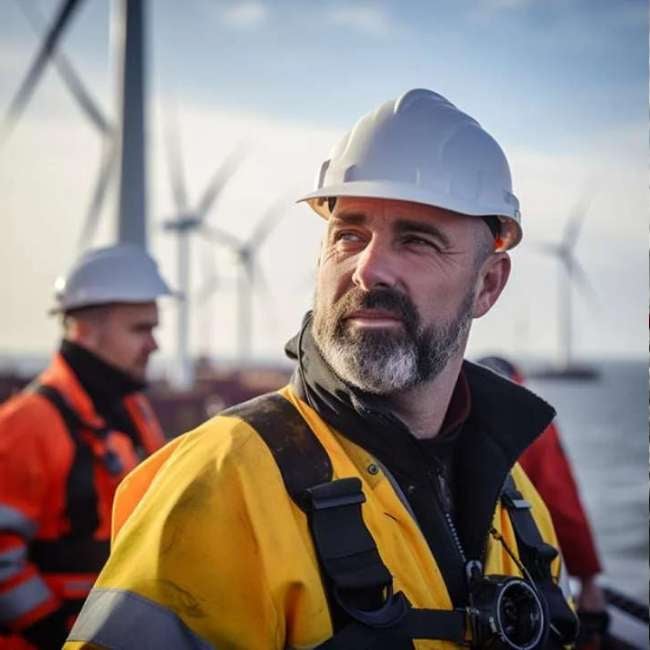
Walk-to-work offshore
You know, as our world's thirst for energy keeps on growing, our oceans - those massive, deep blue mysteries - play an even bigger role in quenching that thirst. Now, imagine being a worker in these sprawling energy factories in the middle of the ocean. Getting there isn't a walk in the park. Or... is it? Enter the "Walk-to-Work" offshore concept.
So, what’s the big deal with Walk-to-Work? Picture specialized vessels, almost like those out of sci-fi stories, fitted with unique gangways and systems that balance themselves against the whims of the waves. This allows folks onboard to simply... well, walk to their work on the offshore installation. No more dizzying helicopter rides or shaky boat transfers. It’s just a straight, safer walk. Plus, these systems aren't just about people; they’re perfect for moving equipment and supplies, ensuring everything needed is right where it should be.
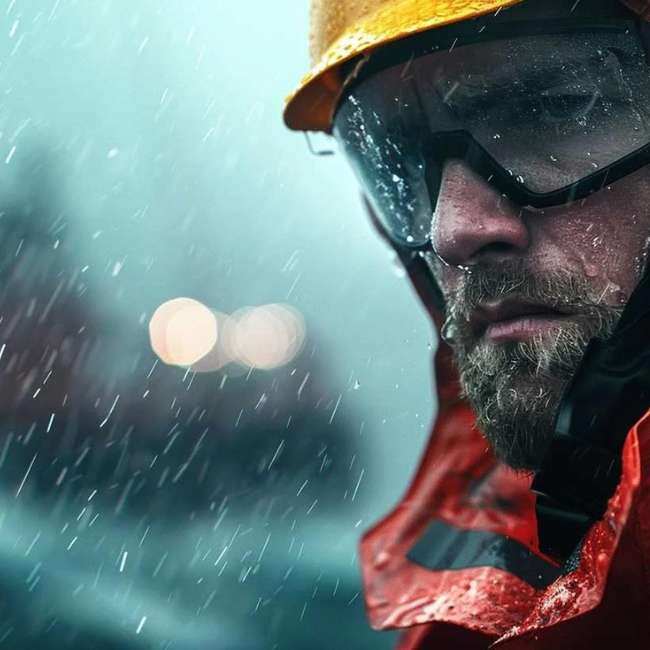
Emergency Response Tech
The world of offshore operations is, without a doubt, very demanding. Oil rigs, wind farms, and different vessels - FPSOs, SOVs, floatels, you name it, are far behind the horizon and, in the moment of crisis, need an immediate and effective emergency response. Remoteness and harsh weather conditions of the offshore environment present very different challenges and need to be approached with specialised equipment and operations. In this article, we enclose a more detailed explanation of the strategies that sit at the core of proper offshore emergency response technologies for personnel on board.
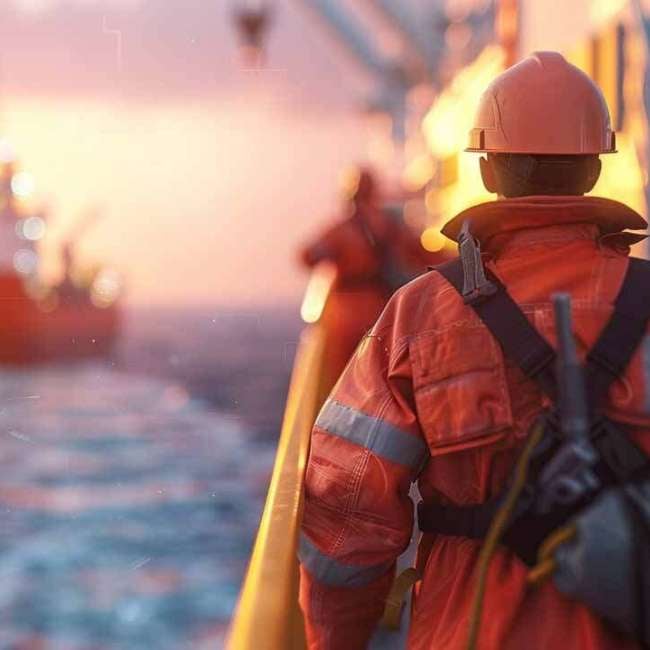
Crew Attendance and POB
Personnel management efficiency on offshore vessels, particularly Service Operation Vessels (SOVs), is crucial for the safety, security, and operational efficiency of maritime operations. In these very dynamic environments, where crew movement is frequent, the tracking and management of personnel on board (POB) are very important. Electronic crew attendance technologies play a critical role in maintaining the accuracy of POB lists, enhancing emergency response capabilities, and improving overall logistical management.
This article will explore different technologies, particularly SOVs. We will delve deeper into their mechanisms, advantages, challenges, and role in shaping the future of crew management in offshore operations.
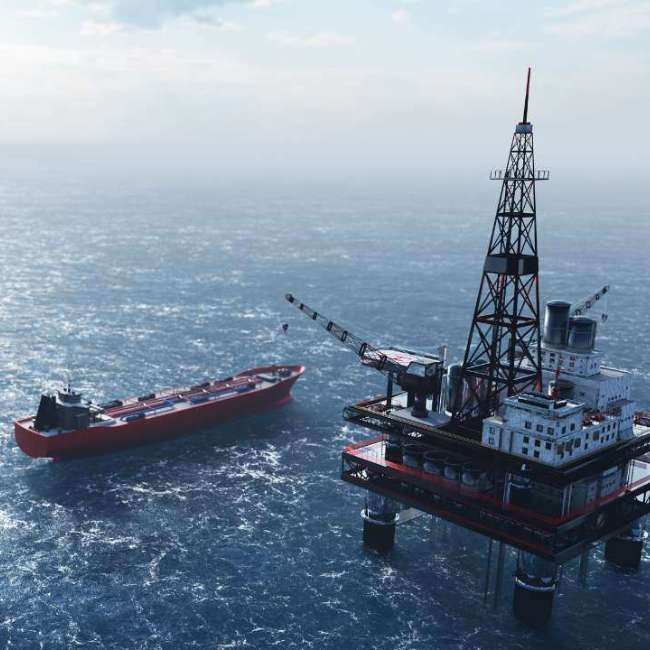
EHS Audit and Personnel on Board
Some of the most challenging places on earth are home to offshore installations like oil platforms and drilling rigs. They are essential cornerstones of global energy, running continuously to keep oil and gas flowing. However, this work is hazardous and complex, and environmental health and safety (EHS) standards should always be followed. However, offshore Installation Managers (OIMs) have a lot at stake since any failed EHS audit can lead to a shutdown and other operational interruptions. This article explores EHS audits in such offshore installations by concentrating on key areas, such as the auditing procedure and better preparation methods.
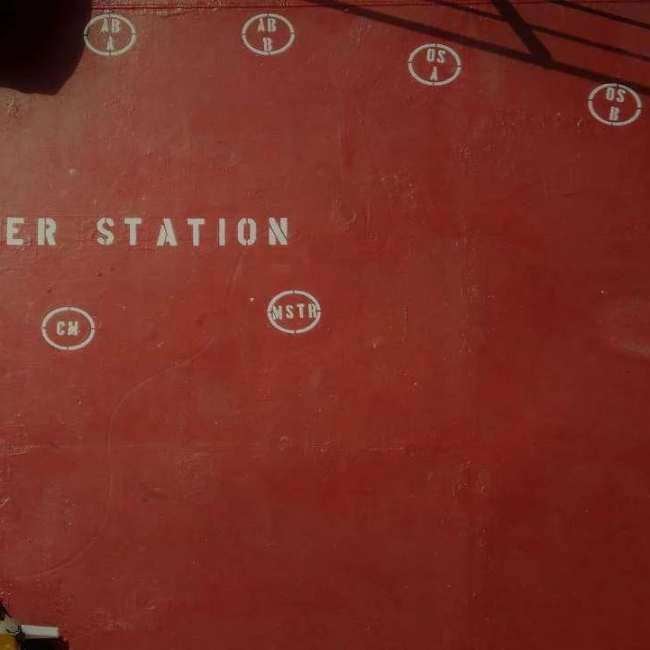
T-Card System and Personnel on Board
Safety and efficiency of operations are the most important things in the offshore oil and gas industry. The environment is hazardous, full of extreme weather conditions, isolation, and possible high-risk incidents like blowouts, fires, and leaks. Personnel tracking and efficient managing of operations become critical tasks in such an environment. One traditional yet effective method of managing personnel on offshore installations is the T-Card System. This system is not new; it has been in many offshore operations for decades. Like any system, though, there are pros and cons. The article centres on understanding the T-Card System: benefits, disadvantages, and possible solutions that reduce its limitations to the offshore oil and gas industry.
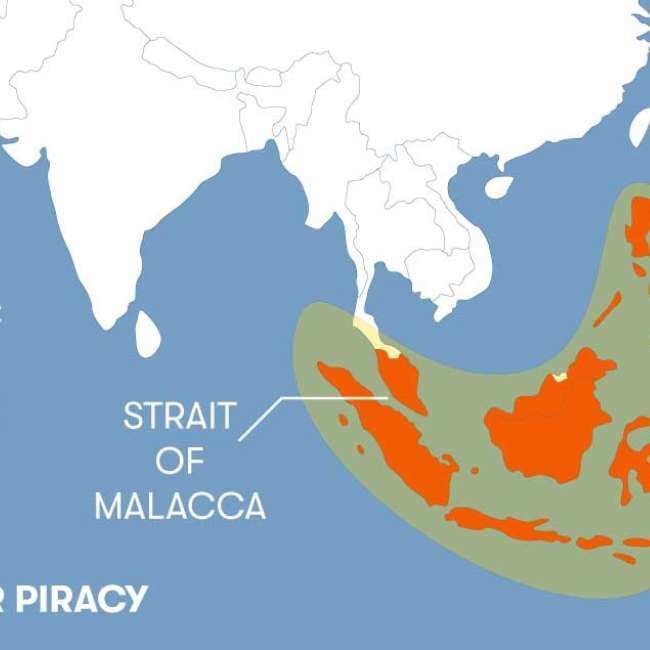
Personnel on board & Oil rig security
The oil and gas industry is one of the strong backbones of the global economy in terms of energy supply for industries, transportation, and homes worldwide. In this regard, offshore oil rigs are considered highly important resources in the extraction of huge amounts of oil and gas from beneath the seabed. However, their strategic value also makes them the target of a myriad of threats, cyberattacks, and physical incursions, as well as hybrid dangers that blend elements of both. Securing these offshore platforms is an increasingly complex challenge as the world moves toward 2025, with technological changes, evolving adversary tactics, and global infrastructure connectivity.
This whitepaper will explore the future of oil rig security in light of an expanding threat landscape by analysing the role of state actors and other adversaries and by identifying the main focus areas through which safety and resilience will be ensured. It also gives actionable strategies to address these challenges, placing emphasis on integrating cutting-edge technologies, workforce training, and regulatory compliance with international cooperation. The oil and gas industry can protect its assets, employees, and the wider energy supply chain by better understanding the nature of future risks and preparing accordingly.
Personnel on board: Emergency mustering
When an emergency occurs on an offshore installation, the first thing needed is an accurate headcount of everyone on site. This is where transponders come in, as they can be used to quickly and easily locate people in an emergency. Personnel wear tags, and readers are placed strategically around an installation, such as exits and firefighting equipment.
In order to ensure that everyone is quickly and safely accounted for, it is important to have designated muster areas equipped with readers. A muster plan assigns personnel to specific locations where transponders automatically muster to the system. Transponders also help track personnel movements and ensure everyone has evacuated the area safely. Otherwise, they will transmit the last recorded position of the tag holder.
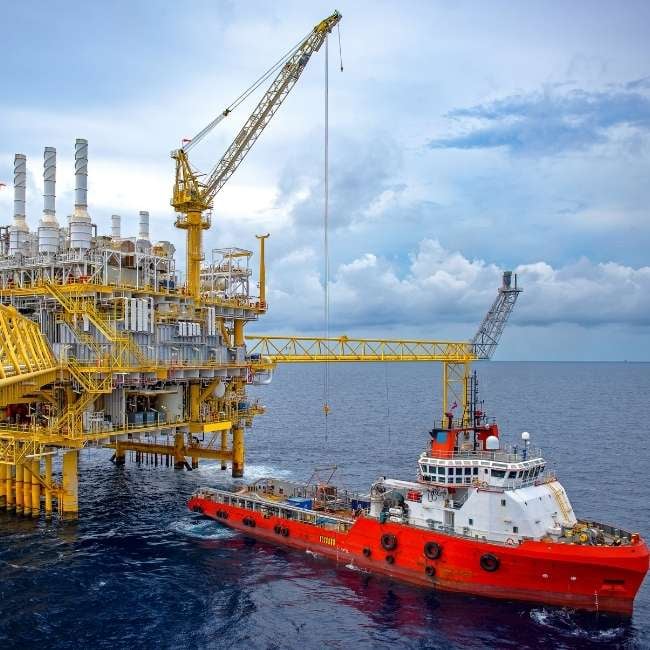
Personnel on board: FPSO Safety
Given the hazardous environment, Equinor required an accurate and reliable safety assistant system to localize its personnel in dangerous areas and situations throughout the production vessel. Crew Companion delivers the required real-time visibility for safety by equipping each worker with a transponder. The devices are located via an infrastructure, covering defined areas of the vessels, such as life boats, mustering zones and dangerous sectors. The location of personnel in these designated areas is constantly reported to the control center, providing full visibility for safety of all labor at any time.

Personnel on board: Monitoring
There are many benefits to using transponders to monitor worker safety. Transponders can provide real-time location information, which can be used to quickly locate and rescue workers who have been injured or trapped in a hazardous environment. Transponders can also track workers' exposure to hazardous materials, allowing companies to manage better and protect their employees. In addition, transponders can help companies comply with safety regulations by providing accurate and up-to-date information on the location of employees.
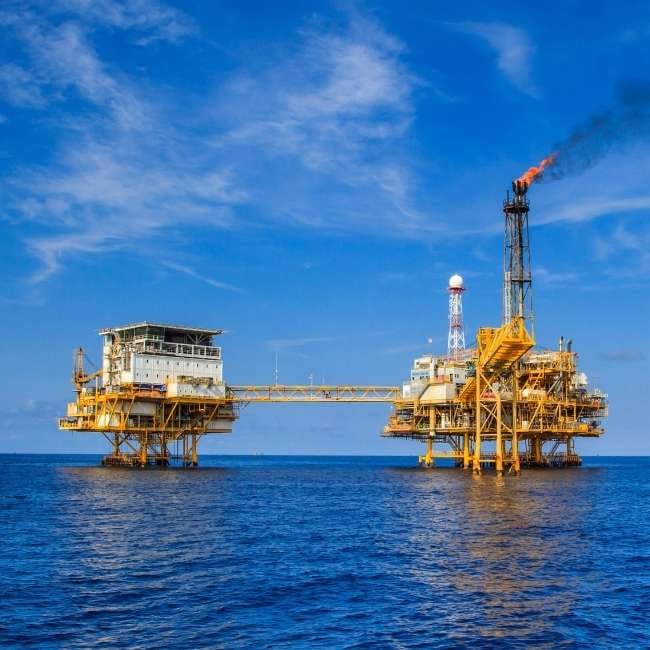
Personnel on board: Mustering Report
Offshore, a mustering report is based on the current personnel-on-board (POB) list. The list of personnel on board a ship is an essential document that details who is responsible for what onboard. The list should be completed before the ship leaves port and should be updated as crew members come and go. On offshore installations, the POB list constantly changes as crews leave and arrive at the platform from the mainland.
The Offshore Installation Manager (OIM) ensures that the list is accurate and up to date. They will need to know everyone on board's names, roles, and contact information in an emergency.
If you are working on an offshore installation, make sure you know where the personnel-on-board list is kept so you can update it as needed. It could be the difference between life and death in an emergency as it will feed your mustering report.

Personnel on board: Walk-to-work system
Workers in the offshore industry face challenging and difficult conditions daily. Traditional methods of transferring crew between installations and vessels, such as helicopter transfers or basket transfers, have been the norm. However, with those methods, huge risks and excessive costs come along, that cannot be ignored.
The emergence of the Walk-to-Work (W2W) approach promises a new era: By utilizing specialized vessels equipped with motion-compensated gangways, this approach has revolutionized offshore crew transfers, enhancing both safety and efficiency.
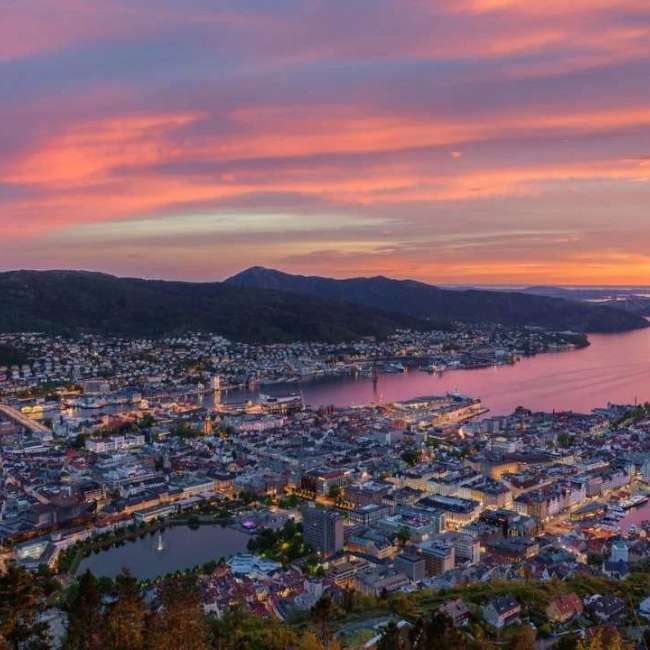
Personnel on board: Heliport App available
The Crew Companion Heliport App is a tool designed to streamline offshore personnel management at helicopter ports. It is already in use in Bergen and Stavanger (Norway).

Personnel on board: T-Card
In the offshore industry, where smooth operations are dependent on the movement, coordination, and tracking of people or equipment, the requirement for effective management tools is urgently felt. The T-card system has been a widely used manual tool in this respect. However, as industries face increasing demands for speed, accuracy, and accountability, the drawbacks of manual T-card systems have become increasingly evident. Electronic T-card systems are a modern, efficient, and fault-free alternative. The shift from manual to electronic has greatly increased efficiency and eradicated most of the inherent problems associated with the traditional manual system.
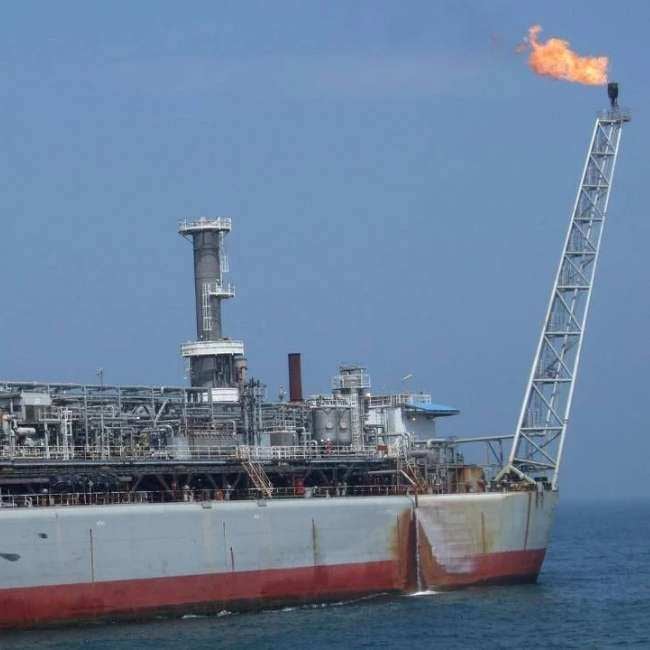
Personnel on board: FPSO Retrofit
The upgrading of an ageing FPSO vessel with a real-time monitoring solution is challenging but not impossible. It needs careful planning, technical know-how, and an in-depth knowledge of both: the ship's legacy systems and the potential of the new technologies. FPSOs are built to last many years, typically decades, in harsh marine conditions. A few of the older ships, launched in the 1980s or 1990s, rely on legacy systems and manual processes for people tracking, safety management, and emergency response. Retrofitting an existing ship that offers real-time visibility into people, automated mustering, access control, and enhanced safety capabilities presents special challenges but also considerable opportunities to enhance operational efficiency and safety. This article explores the technical considerations, processes, and strategies involved in successfully integrating real time monitoring of FPSOs, offering a detailed roadmap for engineers and operators on how to start modernization with Crew Companion.
Personnel on board: Walk-to-work gangway
A big challenge in the offshore industry is safely moving workers between offshore platforms and ships. To tackle this considerable concern, Walk-to-Work (W2W) gangways have surfaced as fundamental engineering innovations, harmoniously blending state-of-the-art technology with rigid safety guidelines.
A walk-to-work gangway combines smart design and safety to tackle risks. This whitepaper dives into walk-to-work gangways, discussing their design, and safety, how they compare to past methods, and why automated checks on crews at sea are vital.

VW Autostadt Infographic
The Autostadt in Wolfsburg focuses on all aspects of mobility. The theme park and educational centre is one of the most popular tourist destinations in Germany. The Autostadt is also the world's largest new car delivery centre and home to the multi-brand ZeitHaus car museum.